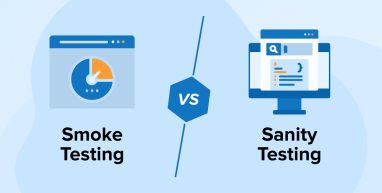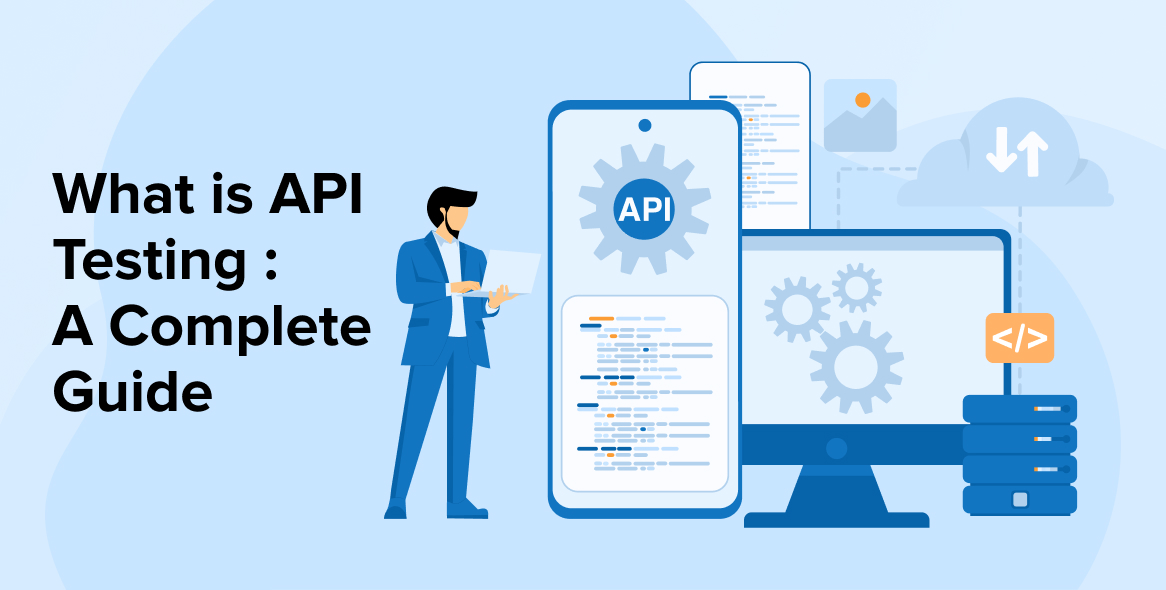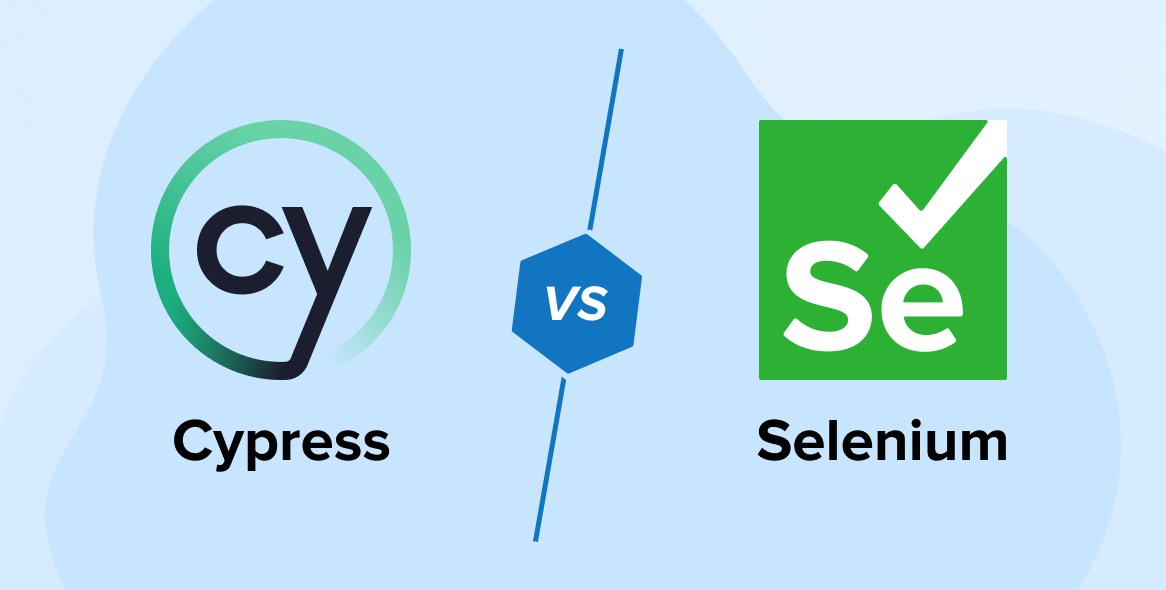
In this competitive world, to stay relevant, businesses need to have software that works tirelessly and delivers the greatest end-user experience. Be it for any industry, the software must be able to offer the best services and it must be created with a lower cost of development. Though there are multiple phases in the software development life cycle, the most important step is testing. Testing is a process that guarantees the software’s quality and makes sure that its functions are trustworthy & efficient. The two best types of software testing approaches that make sure that the end-users get what they want are smoke testing and sanity testing.
Both these software testing types enable the QA service providers to check the system in less time and allow them to ensure that the code’s basic functionalities are working smoothly. Both smoke testing and sanity testing can be performed with the help of automation tools or manually. But which type of approach is better for which type of software solution can be only understood after knowing these two software testing types clearly. Therefore, in this blog, we will learn about smoke testing and sanity testing and also go through the benefits & difference between Smoke and Sanity Testing.
1. What is Smoke Testing?
Smoke testing is a popular type of software testing technique that development companies use to build verification test cases. A smoke test is also called a subset of acceptance testing. It looks for problems in the specific part of the software and not the entire system. This means that the software testing team uses this type of testing to test the acute functionality of the project rather than performing detailed testing.
Basically, when a developer creates a new software project for the QA team, smoke testing is a process that is carried out. But it is not limited to the outset of a new project. It is also carried out when new modules are added to the existing system. Smoke testing can be executed by both software testers and developers as it is simple and easy. Smoke tests are known as a part of the thorough testing process, and it enables the testers to ensure that all important aspects of the build are working perfectly.
Smoke testing exercises are used after the software is built and this ensures that the features of the system are operating properly. This type of testing is run before functional or regression tests. And its aim is to reject a software program that consists of any type of flaw. Basically, smoke test cases carry out rigorous testing to ensure the quality of the new and existing functionality of the system.
1.1 When Should You Conduct Smoke Testing?
Smoke testing is done whenever new software features are developed and incorporated with an established production in the QA/staging environment. To make sure vital processes are running well, it performs a comprehensive check. In addition, it verifies if the construction is stable.
In this testing method, the development team releases the product to quality assurance. Individual test cases or groups of test cases are isolated and run on the build by testers. The QA team ensures the app’s core functionality is working properly. This collection of tests is meant to reveal code-construction flaws. If these checks are successful, the QA team will proceed to the next phase, Functional Testing.
In the event of a failure, the system must be sent back to the designers. Every time we make a change to the build, we run smoke tests to make sure nothing breaks.
Consider a simplified situation in which you are asked to assess an email client. Obviously, the most important aspects of an email client are the ability to log in, compose messages, and send them. If the email is not delivered, is it still beneficial to test features like drafts, deleted files, archives, and so on? Without further testing, you will have to abandon the build. That’s called “smoke testing,” for short.
1.2 Benefits of Smoke Testing
Some of the major benefits of smoke testing are –
- The main aim of smoke testing is to ensure that the app is stable before it proceeds to other testing processes.
- Smoke tests help in increasing the efficiency of the QA team members and make them more productive with their jobs.
- Smoke testing enables the development team to detect errors in the early stages.
- Smoke tests also help in minimizing integration risks.
- When it comes to smoke tests, the time spent in debugging new modules is less.
1.3 Cons of Smoke Testing
Following are the disadvantages of smoke testing:
- Smoke tests do not include comprehensive examinations.
- It is very uncommon for important errors to surface in integration and system testing, even after the entire program has passed Smoke testing.
- If the software build is unstable, smoke testing might be a waste of time.
- If this test can be automated, it will save a lot of time over running the test cases manually.
- This evaluation does not replace thorough functional testing.
2. What is Sanity Testing?
Sanity testing is deep testing and helps in checking the newly added modules in the existing software build. It sees whether the new modules are stable or not. If they are stable, they can be forwarded to further testing. This process is known as Surface Level Testing and it is required to quickly assess the quality of software regressions. Sanity tests have the capabilities to reveal end-to-end testing of the build and it makes sure that it is carried out effortlessly when there are any types of changes in the code. And in any case, if the sanity test fails, the build can be refused to save a lot of money and time.
Basically, Sanity tests ensure that any type of modifications made in the system at any time won’t affect the software’s build. As this is a type of regression testing, sanity testing is used in quality assurance. Sanity testing aims to make sure that the proposed modifications work as intended.
2.1 When Should You Conduct Sanity Testing?
Sanity testing should be conducted after receiving a new build with minor changes to verify that the critical functionalities work before proceeding to more exhaustive testing.
- Regressions or code changes of any size result in a built being sent to the user.
- Once all of the bugs have been fixed, the build will be released.
- Right before releasing to the public.
2.2 Benefits of Sanity Testing
Some of the major benefits of Sanity testing are –
- Sanity testing is a simple process that helps the testers rapidly detect problems in fundamental functionality.
- When Sanity tests detect any issues, the project gets rejected and this saves a lot of time that goes behind regression testing.
- Sanity testing doesn’t require any type of documentation which makes the process very quick.
- Sanity testing is done on the software build just before the production deployment.
2.3 Cons of Sanity Testing
Following are the disadvantages of Sanity testing:
- The scope of this exam is limited in comparison to others.
- When testing for sanity, testers look exclusively at the software’s interface and how it performs its intended tasks.
- For some testers, the fact that sanity checks are rarely programmed can be a major source of frustration.
- Because sanity checks aren’t performed at the level of the design structure, it’s hard for developers to figure out how to address the problems that are uncovered.
3. Key Features of Sanity Testing and Smoke Testing
Following are the key features of Sanity testing and Smoke Testing:
- The QA team can quickly determine how well an application is working properly with the use of smoke and sanity testing. This also ensures the product is of sufficient quality for further testing.
- Time and resources may be saved with techniques like sanity and smoke testing, which determine whether or not an application is sufficiently broken to warrant further testing.
- One of the best practices in software development is to perform a build and smoke test every day.
- Manual or automated tools can be used to perform smoke and sanity testing.
- Based on the state of testing, you might need to execute both Sanity and Smoke Tests on the software build. Smoke tests and then sanity checks would be performed in such a scenario. In the industry, sanity and smoke testing scenarios are often coupled to speed up testing. This leads to widespread confusion and the inappropriate usage of the terminology.
4. Key Difference Between Smoke and Sanity Testing
Some of the major differences between Smoke testing and Sanity testing are –
| Particulars | Smoke Testing | Sanity Testing |
|---|---|---|
| Definition | Smoke testing is a process that offers assurance about the acute functionalities and sees to it that the system is working smoothly. | Sanity testing is carried out to check that the bugs have been fixed after the creation of software build. |
| Stability | The stability of smoke testing is not sure. | Sanity testing is stable. |
| Documentation | Documentation is required in smoke testing. | Documentation isn’t required in sanity testing. |
| Testing | Smoke testing is a subset of acceptance testing. | Sanity testing is a subset of regression testing. |
| Performed By | Smoke testing can be performed by testers or developers. | Only testers can perform sanity testing. |
| Script | Smoke testing is always scripted. | Sanity testing is generally not scripted. |
| Testing Measures | Smoke testing measures the stability of the product. | Sanity testing measures the rationality of the product. |
| Testing Approach | Smoke testing can be performed in both ways, by using automation tools or manually. | Sanity testing can be performed manually. |
| Testing Functionalities | The smoke test checks all the functions of the software. | Sanity testing is performed when any modified functions need to be checked. |
5. Conclusion
As seen in this blog, when it comes to comparing Smoke testing vs. Sanity testing, both of them are very different from one another. And these testing approaches come with some basic testing ideas that most quality assurance teams adhere to. Basically, in order to make a client project successful, the testing team must be aware of the principles of Smoke and Sanity testing. And the QA team must know which type of testing must be used for which type of project in order to save time and energy.






Thank you for giving deep insights into the difference between smoke and sanity testing in such a clear way. As a software tester, understanding both tests are most important for ensuring the quality of software. This article will help both testers and developers to streamline their quality assurance process.
I thought your explanation of the difference between smoke testing and sanity testing was excellent. I would also add that it is critical to automate these tests whenever possible, as this can ultimately save a great deal of time and effort.